When you book your first lessons at a riding school, you are usually advised what to wear for both your comfort and safety horse riding clothes. However, once you progress to keeping your horse, these recommendations are unfortunately all too often disregarded. Wearing the right clothes for horseback riding is not just a matter of tradition or presenting an intelligent appearance: they are specifically designed for comfort, practicality, and- just as important-protection, too.
Most Common Categories of Horse Riding Clothes
Headgear, footwear, and body protectors are the three main areas of concern. The headgears are so designed that they protect the head and give a bright look to the horseback rider. The footwears for horse riders are long boots that give a bright look and protect the rider’s foot from possible injuries and accidents. The body protectors protect vital parts of the body from possible accidents.
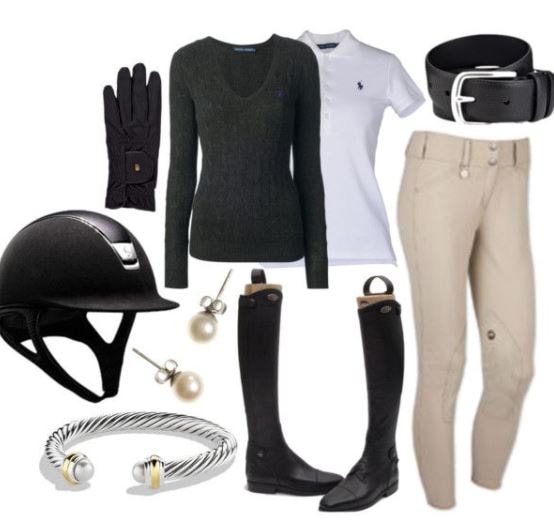
Horse Riding Clothes: Headgear
Wearing a hard hat is vital for all mounted activities as head injuries can be grave, even fatal. Even if you do not hit your head directly during a fall, remember that a glancing blow from a hoof or even a low-hanging tree branch can as effectively crack your skull. Although a hard hat may not prevent serious injury in all circumstances, there is no doubt that many lives have been saved by wearing one.
In the United Kingdom, it is a legal requirement that children aged fourteen years or younger wear correctly secured, protective headgear that meets current approved safety standards while riding on the road.
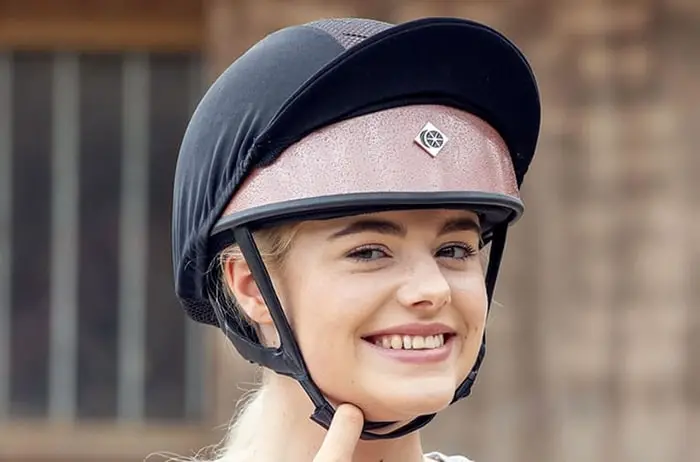
What to Watch When Buying a Riding Hat?
- Go to a shop with staff trained in fitting them to ensure that you get the right size and that you are shown how to check and correctly secure the harness yourself.
- Even if you have owned a hat before and think you know your size, a retailer doing his job correctly will still measure you up. Surprisingly, many riders are sure their hat fits but are wearing the wrong size.
- Do not mistake fairness of fit for tightness, or you could end up with a too-large hat.
- Although a well-fitting hat should not cause severe discomfort, it does need to be a snug fit. Be prepared to try several different makes until you find one that best matches your head shape.
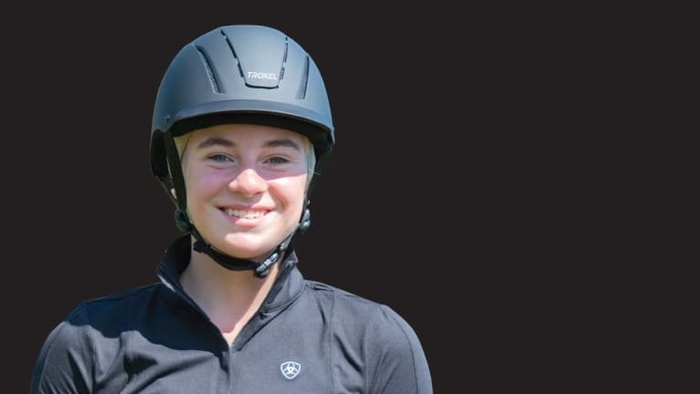
- Please do not place the hat on the back of your head first, as it will end up sitting too far back; put it on your forehead first and rock it back into position so that it sits squarely on the head.
- Next, adjust the harness; first, the chinstrap, and then the rear fastenings according to the manufacturer’s instructions. Rear fastenings should sit comfortably at the base of the skull.
- The harness needs to be secure so that it isn’t possible to remove the hat once fastened, but not to the point of choking you.
- Remember that although it will prevent the hat-tipping forwards or coming off, the harness will not make a hat fit correctly if the size is wrong.
- Check that it meets current safety standards. Hat safety is of the utmost importance, so never buy a secondhand hat because you don’t know its history.
- Novice riders are usually able to hire a hat from riding centers when initially starting, but once the decision has been taken to continue riding regularly, this should be the first, and is undoubtedly the most important, item of riding clothes to invest in,
1. Replace Damages Headgear
If you fall from horseback and hit your head or drop your hat onto a hard surface, even though there may be no visible sign of damage, the level of protection offered may be significantly reduced by the impact. This may seem like an expensive policy, but it is far easier and less costly to replace a hat than the head!
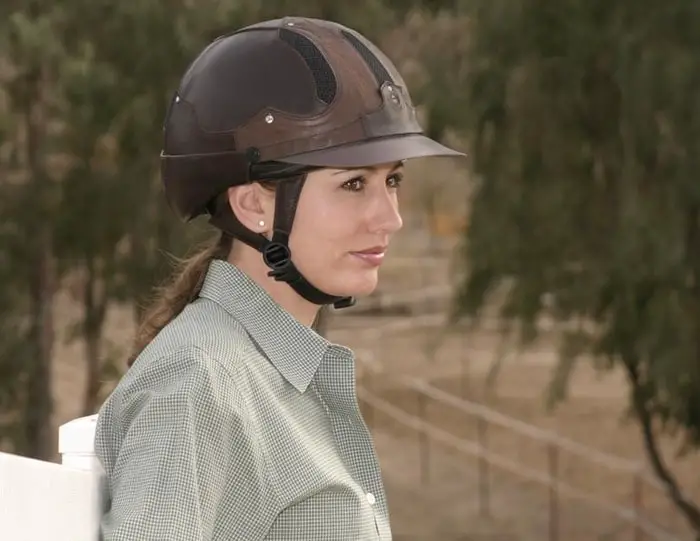
2. Secure Your Hareness at all Times
If the retaining harness is not secured, there is little point in wearing a hard hat: do not leave it unfastened.
3. Look After your Hat
Only use cleaning methods recommended by the manufacturers, and don’t leave your hat in hot places, because extreme heat, such as in the back window of the car on a hot day, can distort it.
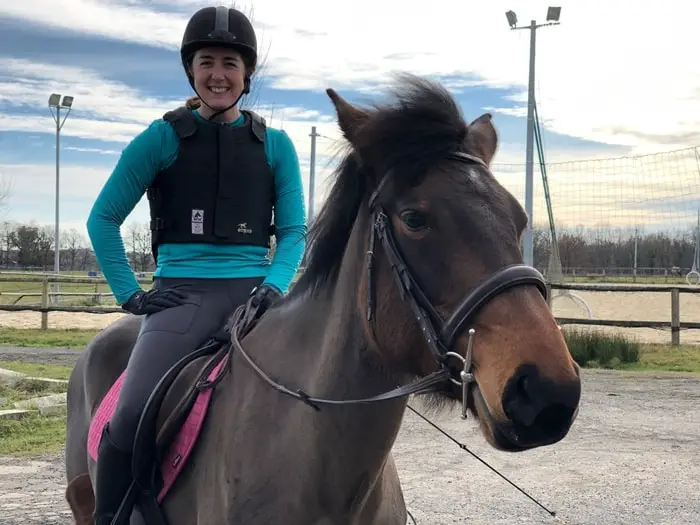
Horse Riding Clothes: Footwear
Make sure that your footwear will not become the wedge in or slip through the irons- wedge heels, sandals, and wellington boots are not suitable footwear for riding. Neither are trainers, except those made by equestrian manufacturers and explicitly designed for riding in. Suitable footwear should not have heavily ridged soles. Still, it should have a defined heel of not less than 1.25 cm and not more than 2.5 cm.
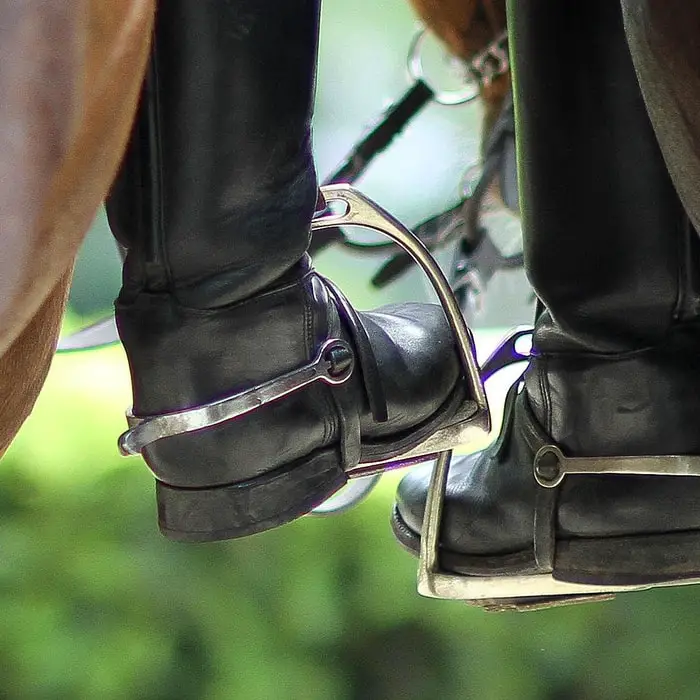
Use protective footwear when handling horses- even a tiny pony standing on your toes can be an agonizing and sometimes bone-breaking experience. Steel toecaps have had a bad press due to substandard products appearing on the market; however, they are nowadays much improved- although you should make sure that such boots are CE marked and carry a safety standard mark.
Horse Riding Gear: Body Protectors
At one time, you would only ever see jump jockeys and horse trials’ riders wearing a body protector, and even then, it was on an entirely voluntary basis. However, their design has become far more sophisticated and adequate to the extent that they are frequently worn for choice by leisure riders and compulsory in specific competitive disciplines.
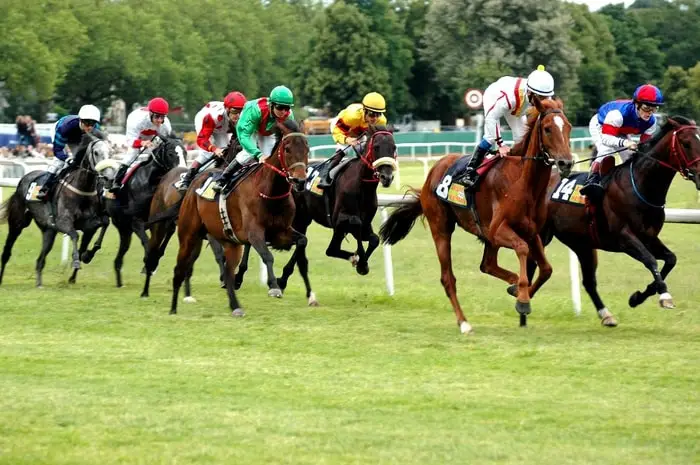
Falling inevitably carries a risk of being trodden on or kicked, as well as of injuries incurred through hitting the ground or contacting a tree or a jump, for example, and a body protector can help to cushion the blow. The best will offer some protection to vital organs, prevent minor bruising, reduce significant soft tissue injuries to the level of bruising, and prevent a limited number of rib fractures. They won’t prevent injuries involving severe torsion, flexion, extension, or crushing of the body.
Horseback Riding: Important Points To Remember
1. Go to a Reputable Retailer
When buying a hard hat, go to a retailer with staff trained in fitting and who will be able to give you advice on how to put it on and adust it correctly yourself. A retailer should not sell you a body protector without measuring you up first to ensure you are given the correct size.
2. Make Sure You are Measured
You need to measure from the waist up over the shoulder and down the back to the base of the spine and around the chest and waist.
3. Make the Necessary Adjustment to Achieve a Close Fit.
Having obtained the appropriate size, it will need to be adjusted to give a close fit. A design that will mold to shape of your body over a while will be better than one that is very stiff and flat-fronted, making your chest feel compressed and with a propensity to ride up, too. Body heat may also affect the cloth fit, so wait a few minutes before making the final adjustment.
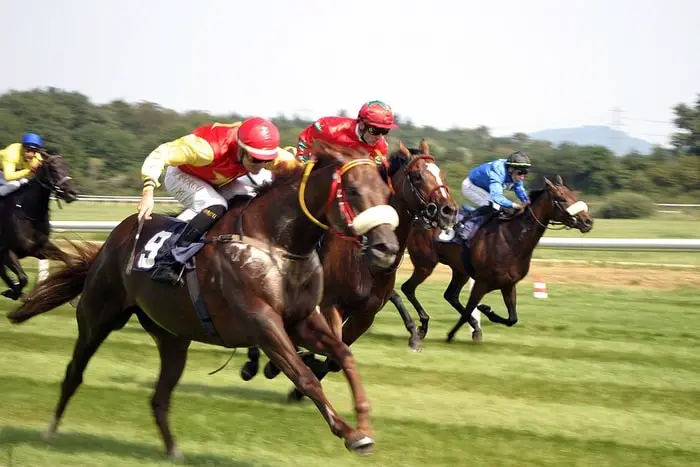
Horse Riding Clothes: Look Out For the Following
- The body protector should have a secure and reasonably firm fit to prevent it from moving around and to ensure that it stays in place in the event of a fall.
- It should not cover the whole circumference of the torso.
- The back should reach the prominent bone at the base of the neck.
- At the front, the bottom edge should be not more minor than 25mm below the last rib and should reach the pelvis level.
- The holes in the body protector for the arms should be circular and as small as possible.
- It should be comfortable to wear in all riding positions and not impede flexibility or hamper movement.
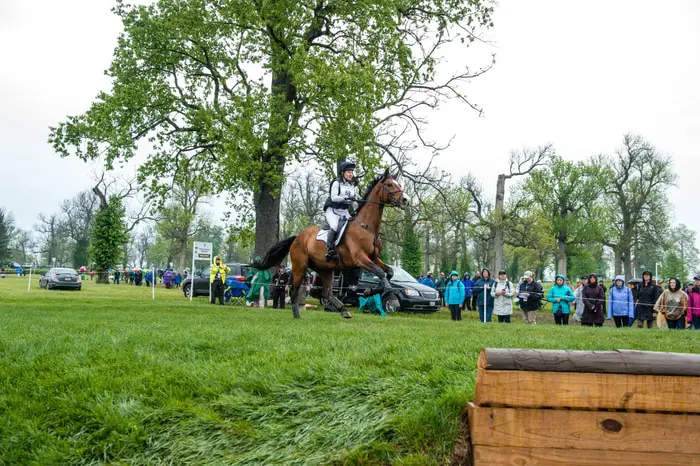
Horse Riding Clothes: Clothing and Safety
Here are some other considerations concerning clothing in its relation to safety:
Gloves will protect the hands.
When riding or leading, gloves will protect the hands from blisters and friction burns. Those with rubber pimples on the palms will also give a better grip.
Use Spurs with Discretion
Do not wear spurs when riding an unknown horse for the first time. Also, remove them when handling any horse: it is straightforward for the shanks to become entangled if you step backward or sideways, which can trip you up.
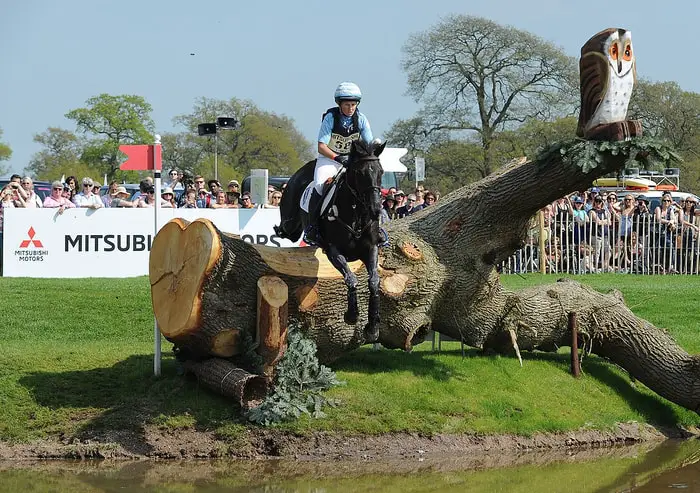
If you wear a jacket, do it up.
Please do not leave it open and flapping, which may spook your horse. Never attempt to remove a jacket while mounted for the same reason.
If you wear spectacles: plastic lenses are safer than glass ones.
Also, rigid frames can break in the event of a fall and cut your face, so it is better to invest in a pair with flexible frames.
Always Protect Your Arms
If the weather is hot, wear a light shirt, but not a single, sleeveless T-shirt- or less! Even lightweight fabric sleeves will give some protection against scrapes and grazes in the event of a fall.
Leave your jewelry at home.
Earrings, bracelets, necklaces, rings, and body piercings can all cause injuries while handling horses and riding activities.
Wear the correct gear when handling horses
Wear a hard hat, gloves, and sturdy footwear when handling horses and riding activities. A survey conducted by an equestrian insurance company revealed that humans’ most significant proportion of equine-related injuries occurs in the stables or while leading.
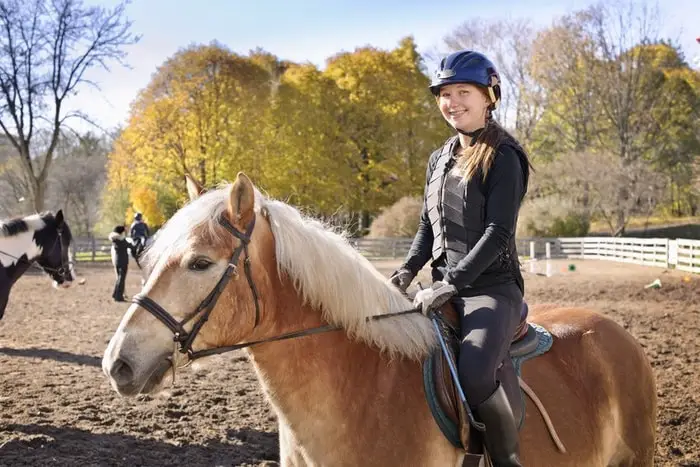
When buying new protective clothing, check with official bodies the latest standards.
Standards are subject to change: if you are planning to compete, look through the official rule books, or contact the governing body of the sport to ensure that your garments meet their guidelines; different disciplines may require different levels of protection.
Horseback Riding Gear: Clothing and Comfort
Comfort while riding also contributes to safety: a good riding position will often be compromised if clothing rubs or irritates. The rider’s attention is distracted from what the horse is doing.
- Jodhpurs perform ideally because they allow free movement, while seams are strategically positioned and designed so as not to cause chafing in crucial parts of the anatomy!
- Underwear is worthy of mention at this point too. Men are likely to be more comfortable in close-fitting Y-front type underpants rather than boxers; ladies should avoid lace-edged garments or thongs, and while a well-fitting bra offering good support can also make life more comfortable, underwired ones should not be worn as the wires can work loose and penetrate an armpit.
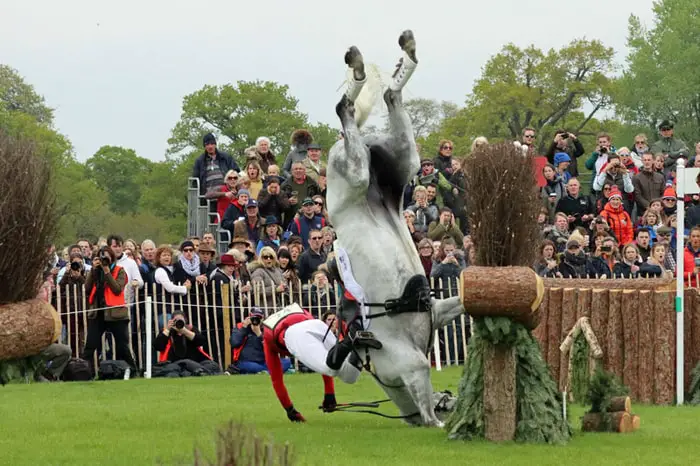
Final Advice on Horse Riding Clothes
Horseback riding is an excellent exercise both for rider and horse. There are many records of fatal to minor accidents during horse riding. Horse riding clothes that protects the rider from possible accidents and injuries. The protective riding clothes include headgear, body protectors, and footwear. In my article, I have discussed protective riding clothes briefly in point form for your easy understanding.
